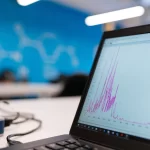There is no doubt that the Covid-19 pandemic has impacted the worldwide economy in 2020. It has also impacted the movement of technical developments and the improvement of new goods in various companies. Regardless of these postponements, there have been numerous new developments, pushing technology trends through various technologies. It includes artificial intelligence, 5G, Internet of Things (IoT), extended reality (XR), and automotive safety.
As the end of the year approaches, we can see some new technology trends that will impact 2021. Companies have advanced and successfully executed their digital transformation powered by new technology and other recent advances.
Here are some of the trends that are going to influence the way we work and live in the future:
- 5G will come to the forefront: In 2021, all the discussion and publicity about 5G will turn out to be real. A few months earlier, the need for a reliable and fast link became serious. When digital collaboration, telecommunications, and video conferencing became necessary, we had to find ways to increase speed. For telecommunications providers, it was apparent enough at that point that 5G was the best solution. For different tools, such as IoT, the arrangement of this innovation will be essential. Approximately 51% of IoT-using organizations have noticed an improved insight into consumer desires, processes, and inclinations. In this way, the value of 5G will soar in 2021.
- Increasing Demand for Ethical AI: Earlier, companies that bought AI and other machine learning developments paid little attention to their ethical effect. Nevertheless, values-based buyers and workers now hope that companies will responsibly consider AI. Companies will actively decide to collaborate with partners based on data ethics over the coming years. They will adopt data handling practices that represent their values as well as the values of their customers.
- Automation Roadmaps Reassessment: Coronavirus rapidly changes the automation strategies of organizations toward back-office processes and organization power. The infusion of robotic and automated process automation with pragmatic AI and low-code tools will be represented by intelligent automation. These innovations can allow companies to become more proficient and tougher while expanding their activities.
- Customer Data Platforms (CDP): We have seen a rise in consumer data platforms (CDP) in recent months. Fragmented data from various sources is difficult to bring together. You’ll need well-cured and comfortable operations to operate effectively. In an ongoing survey, an expected $3 trillion goes down the channel every year because of awful data. Therefore, as an entity, it’s elementary that you fix this problem right on time. Fortunately, CDPs help to deal with this problem by collecting information from all sources. They arrange it then, name it and make it available.
- Driver Monitoring Systems (DMS): Automotive safety technology is shifting from outside-vehicle applications to in-vehicle applications. Sensing innovation is currently integrating driver status monitoring with external environmental readings. At the same time, automotive AI integration is becoming an inspiring automotive safety agent, reaching beyond the roles of entertainment and user assistance. The critical use of driver monitoring functions will focus on developing more complicated, stable, and precise camera systems. This implies that in the enhancement of autonomous driving systems (ADS), DMS would be necessary as DMS performs several roles simultaneously. It includes real-time detection/notification, driver skill assessment, and takeover of driving controls whenever necessary.
- Cloud-native Technologies: Born from open source and incubated in public clouds, rising cloud-local developments drive rapid growth. The growth is in a greater range of areas than just the public cloud. Cloud-native technology, like serverless computing and container architectures, will proclaim another era of distributed enterprise applications from 2021.
- Cybersecurity Mesh: You can get to any digital security asset using the cybersecurity mesh, regardless of its location. This technology’s benefit is that it allows people to place security divider around individuals rather than the whole organization. The sudden increase in remote workforces and cloud technologies has affected company assets’ protection outside the organization’s edge. The security border goes beyond and protects individuals operating remotely due to the assistance of the cybersecurity mesh.
- Hyperlocal Business Operations: Large companies would boost their ability to operate hyper-locally in the following decade, with provincial fair-size organizations evolving and expanding to new topographies. Companies can plan structures that can geographically disperse customer engagement frameworks and business tasks to critical geographic locations. While retaining centralized advantages in technology management. Security from Zero Trust will assist clients in exploring this step.
Quantum Computing: Quantum computing helped control the spread, hunt for new vaccines, and advance therapeutics in the administration of COVID-19. As people begin to grasp quantum computing power, we are bound to experience its application in various projects.










